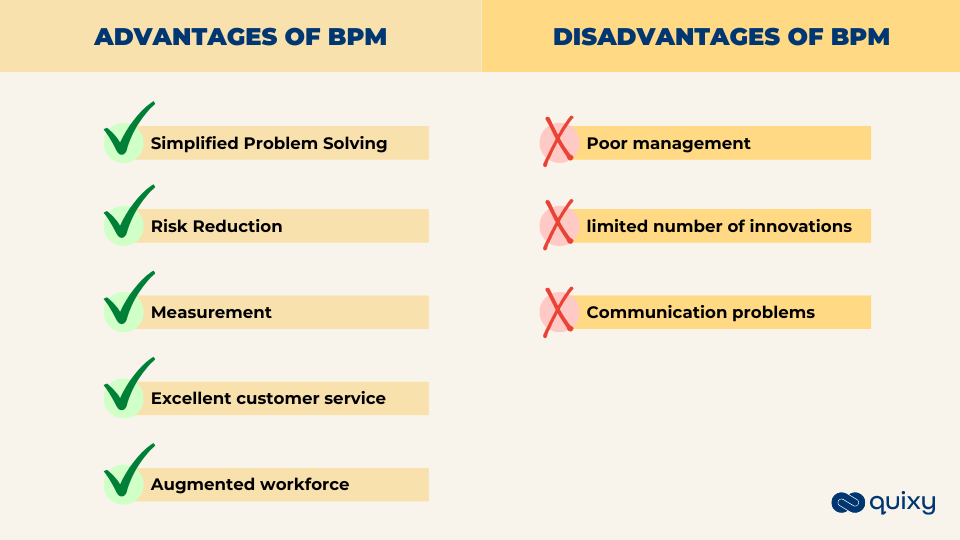
Case management and business process management are two approaches to building processes. The infrastructure and overall architecture of business process management (BPM) and case management (CM) are very similar.
Both offer solutions integrating business processes, company rules, and systems. In streamlining and automating business processes, these similarities and many others confuse.
For each situation, it’s important to understand what these two solutions are, what is BPM vs Case Management, and what their advantages and disadvantages are.
What is BPM?
Business process management, or BPM, is the process of managing workflow processes across an enterprise, including businesses, agencies, and nonprofits. It focuses on the effectiveness of individual workflow processes.
Each business process can be clustered into a timeline with relationships to other workflow processes. In HR, an example of a process is the onboarding of new employees. To complete the process, each employee must complete a specific set of documents. The file and process are complete once all the items have been completed and approved, even if some documents have sub-steps.
Automating processes through BPM software ensures consistency and easy retrieval of data. Through digitization, it eliminates the need for flowcharts, forms, and emails for manual processes.
Also Read: Business Process Management – The What, Why, and How
What is Case Management?
Case management involves handling cases through a variety of processes until the client’s objective is met. Human judgment is needed to decide each course of action because it has a defined goal. Coordinating a case’s resolution involves gathering data from several sources.
In process execution, case management is best suited for complex cases requiring ad hoc decisions.
Investigating a case would be a suitable example. Even though steps may be taken, the direction in which they are taken may vary widely. Additionally, it’s not just the outcomes that make it a case, but the fact that the process itself is inconsistent, as with BPM. The case management process requires that multiple people can perform their required tasks while still understanding the case.
Also Read: Case Management Software 101: Everything you wanted to know
BPM Vs Case Management
There are three main areas where BPM vs Case Management differ: Defining complexity, the approach, and a management approach.
Complexity
There is no doubt that case management is more complex than business process management.
Business process management emphasizes the efficiency of single workflow processes. While case management is concerned with the complex processes involved in handling cases in which a large number of people or departments need to intervene in an enormous amount of data.
The Approach
A process-centric approach is used in business process management, while a data-centric task-oriented approach is used in case management.
A task is bound to a process in BPM. The sequence of events is determined by a predefined process flow. There is a direct connection between every event, with each task affecting the one after it directly.
A case management process is determined by events or actions. Data input from various sources determines the next step in the process. During the resolution of the case, these can be refined at any time.
A Management Approach
Case management workflow follows a highly adaptive workflow, whereas business process management follows a structured workflow.
BPM involves a structured sequence of processes. A single flow model is usually used for the process flow, which is formulated in advance.
It is possible to automate repeatable sequences of activities since they are logical.
Rather, case management involves an unstructured progression from initiation to resolution. There is a high degree of dynamicity in the process flow and the decision-making process is highly flexible. Based on information or circumstances presented to them, knowledge workers determine the course of action.
Also Read: 23 Must-Have Features of a BPM Platform that you definitely need!
Case Management and BPM: Pros and Cons
Consider the advantages and disadvantages of business process management and case management if you’re still unsure.
Advantages of BPM
According to Forrester, BPM initiatives can result in productivity benefits of 30 to 50 percent. Comparatively, only 25% of typical IT and ERP projects were finished. BPM has the following advantages:

1. Simplified Problem Solving
BPM simplifies the operation framework by allocating tasks to the right employees. When factors need to be resolved or improved, BPM takes effect. With BPM, employees can focus more resources and focus on issues within their sections.
There is no usual executive meeting where all problems are tossed out and managers point fingers at who is responsible for a particular issue. The ability to identify problems and come up with solutions quickly is referred to as agility in most cases.
2. Risk Reduction
The problem-solving attribute of BPM is well-connected to this one. Employees who are strategically placed minimize organization risks and pitfalls to the extent that concentration is maintained and resources are managed effectively. Reduced risks enable organizations to make better decisions for foreseeable issues.
3. Measurement
BPM focuses on visibility, as mentioned earlier. Early in the process, the discipline can demonstrate tangible and measurable results. Organizations use analytics to find out what is working and what isn’t. Tools and programs provide employees with the ability to monitor and document important numbers with the help of modern technology.
4. Providing excellent service to customers and employees
It is possible to focus on the customer and grow the employees at the same time with BPM. The customer receives better customer service and IT support as well as products and services tailored to their preferences. Their needs are taken into consideration. By using the BPM framework, professionals can build their careers in a challenging but rewarding environment. Ultimately, BPM achieves win-win results.
5. Augmenting the workforce with technology
As automation threatens job security, many employees are concerned about their future. BPM remains dominated by real employees and the human workforce. Using BPM requires competitive employees rather than smart computers. To ensure quality, both are maximized in BPM.
Disadvantages of BPM
The disadvantages of BPM are as follows.
1. Loss of funds and Poor management
Only a correctly implemented BPM framework will yield its full benefits. You do not want to lose funds and other resources by not adhering to the methodologies. Despite being affordable, BPM isn’t cheap. The cost is still high. You will see an increase in your ROI in no time if you do it right. If not, your organization will face big problems. Poor distribution of information can also lead to poor analysis.
2. A limited number of innovations
When it comes to BPM, modern technology and the workforce should be utilized to their full potential. It has been reported, however, that organizations employing BPM are not as adept at adapting to modern technology. Innovation may be hindered by process management itself.
3. Communication problems
The key to almost everything is communication. BPM’s method of separating workflows and processes is viewed by some organizations as a cause of poor communication between workers in different departments.

Advantages of Case Management
- Unstructured data can be efficiently managed and complex cases can be resolved quickly.
- Multiple users can handle cases using a single-user interface.
- The result is a more effective collaboration between departments or teams.
- By adjusting specific actions, optimal results can be achieved.
- Data can be easily gathered, organized, and shared.
- Access to pertinent information is quick and easy thanks to its integration of databases.
- Reports can be generated more quickly to track the status and monitor progress.
Disadvantages of Case Management
- Documentation is a significant part of the process. In cases of similarity, external documents still play an influential role in providing records.
- Human intervention is required, and bias can still affect decisions.
- The backend of the system may require the services of a software specialist.
Conclusion
As can be seen, both business process management and case management have their advantages and disadvantages. As a result, there is no single comprehensive solution to streamlining business processes.
By utilizing both systems, you will not have to choose one over the other. A combination of structured and dynamic processes can significantly increase efficiency when used together.
As a result of integrating adaptive BPM and case management software, you will be able to develop and manage strategic applications that will optimize your business processes and drive your growth.
Frequently Asked Questions(FAQs)
Q. What is the difference between BPM and Case Management?
BPM focuses on optimizing and automating structured, repeatable processes, while Case Management handles dynamic, unstructured, and ad-hoc work requiring flexibility.
Q. When should I choose BPM over Case Management?
Opt for BPM when dealing with well-defined, predictable processes that require efficiency, standardization, and automation for improved productivity.
Q. When is Case Management more suitable for business needs?
Choose Case Management for scenarios involving unpredictable, variable processes that demand flexibility, collaboration, and adaptability to handle unique cases.
Q. Can BPM and Case Management be combined?
Yes, businesses often use a combination of BPM and Case Management to address both structured and unstructured aspects, offering a comprehensive solution.
Q. How do I decide which approach is best for my business?
Assess your business processes‘ nature, variability, and need for flexibility. Choose BPM for structured processes and Case Management for unpredictable, dynamic workflows requiring adaptability.
Subscribe
Login
Please login to comment
0 Comments
Oldest
















